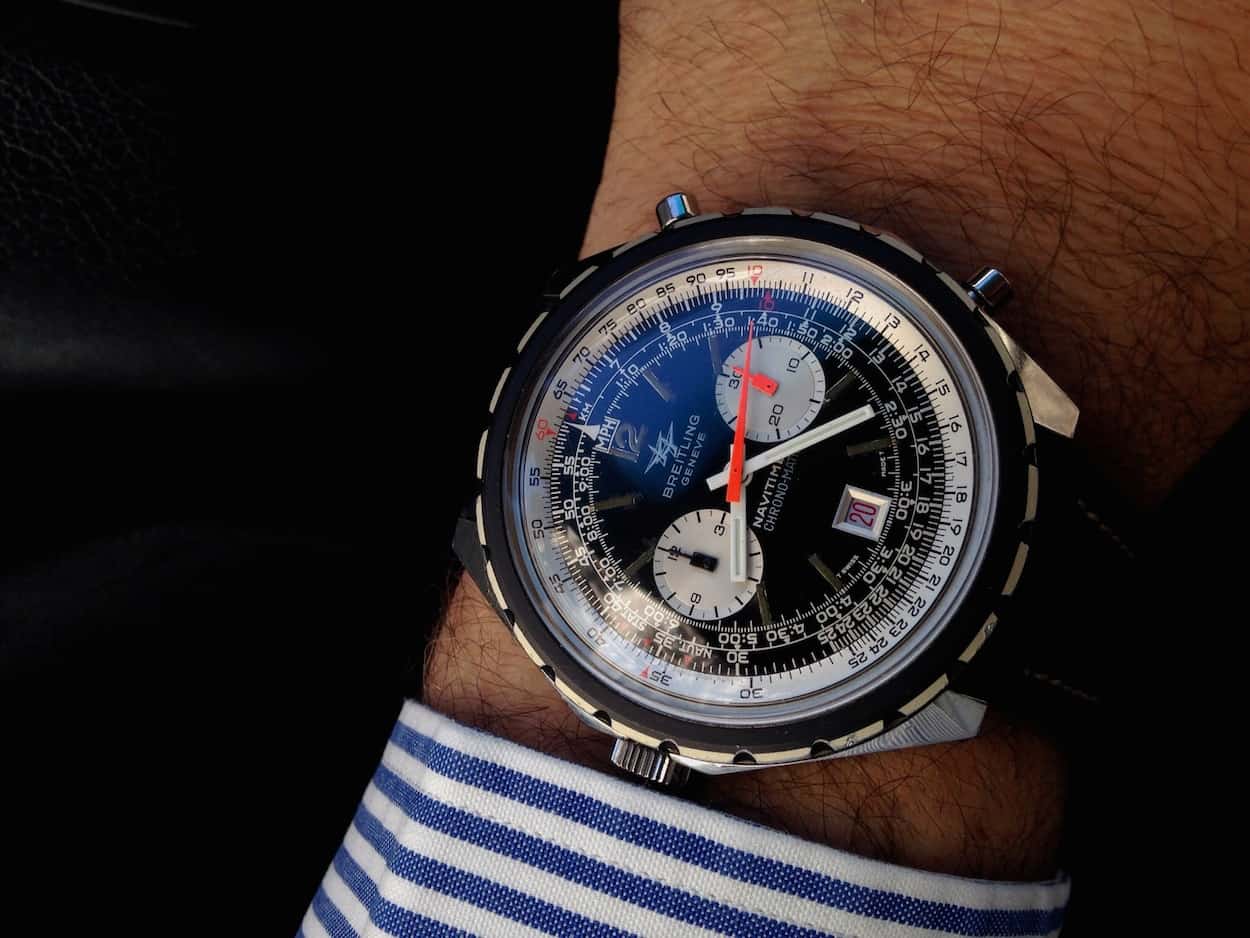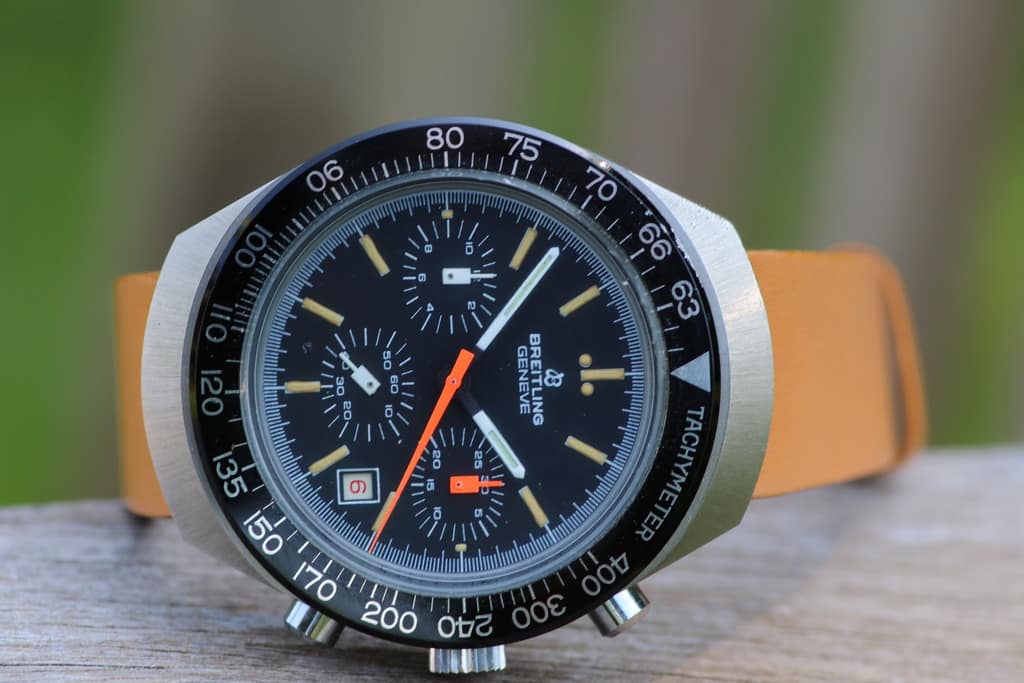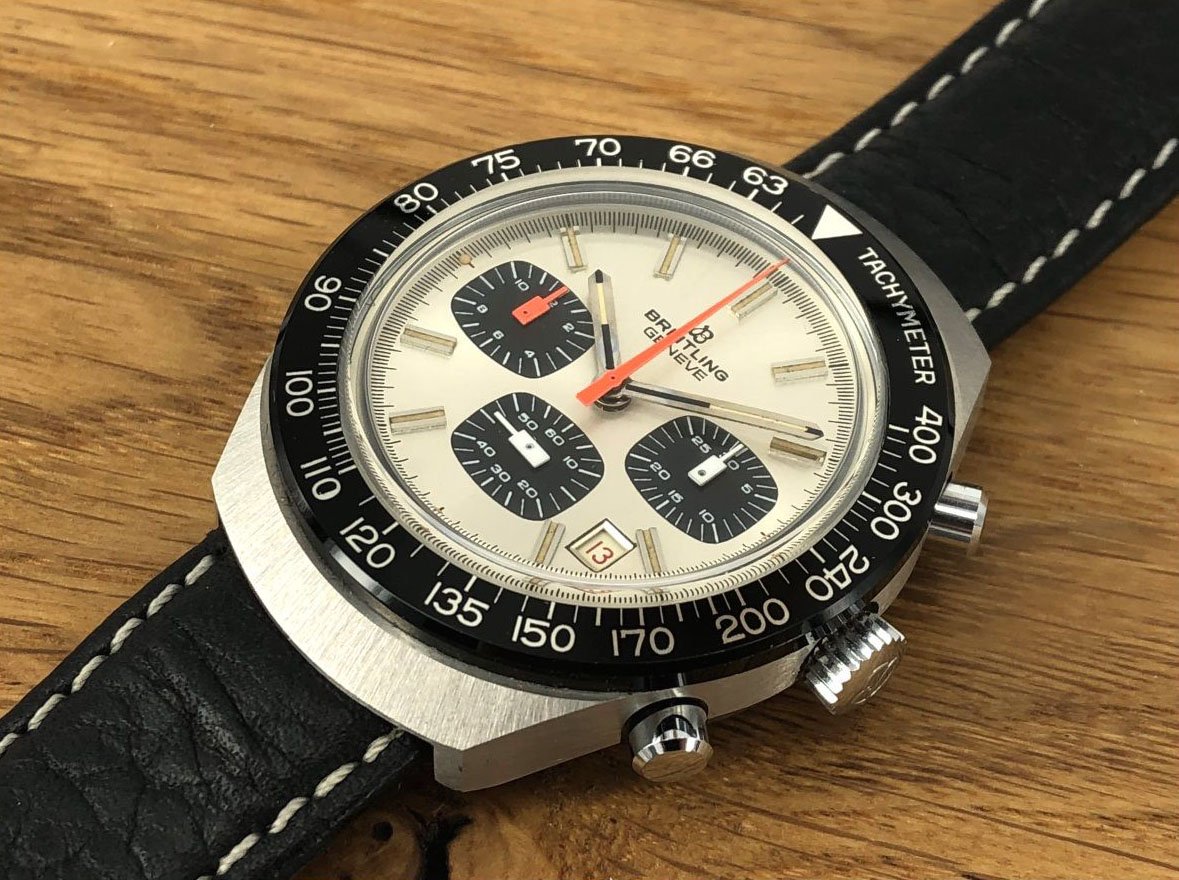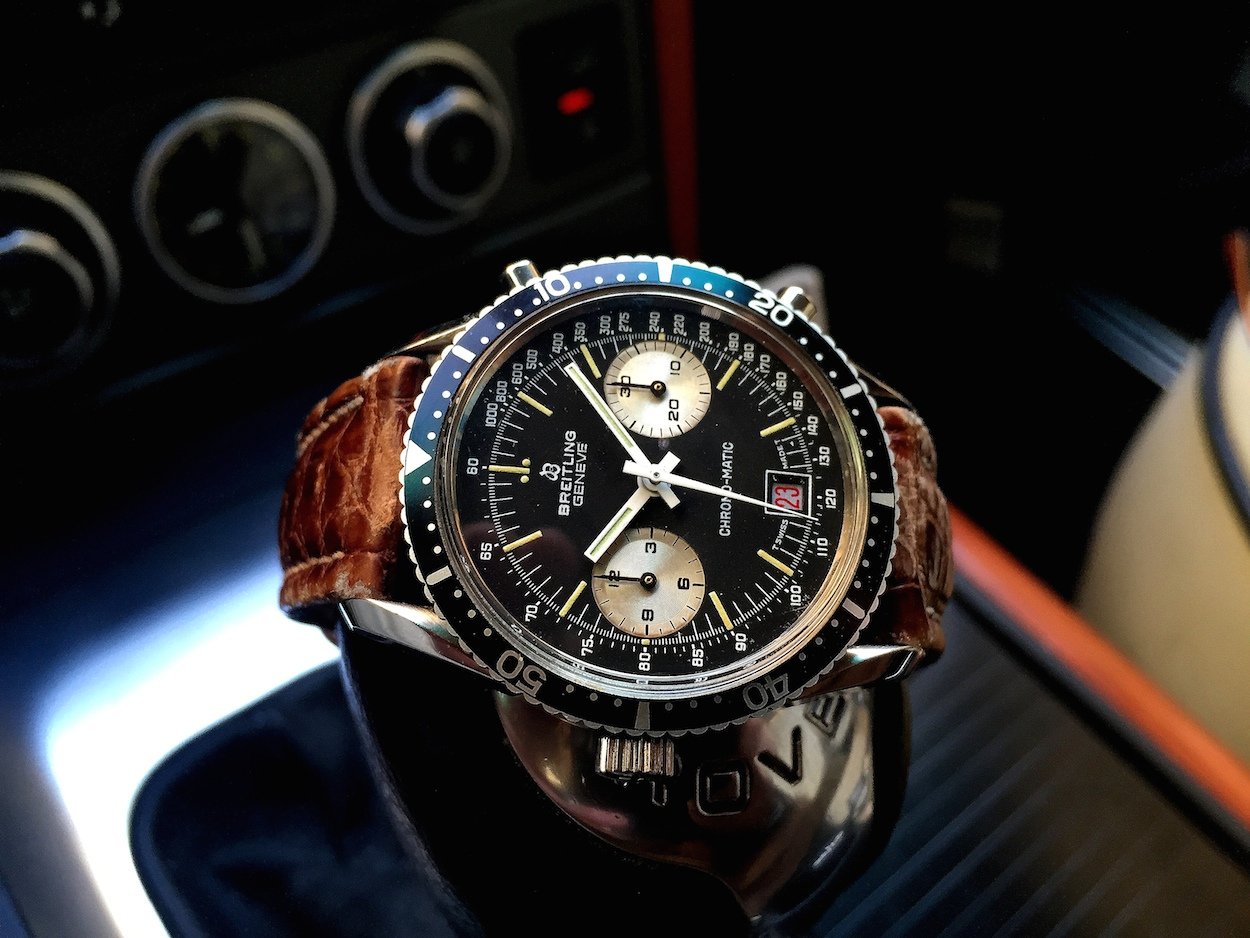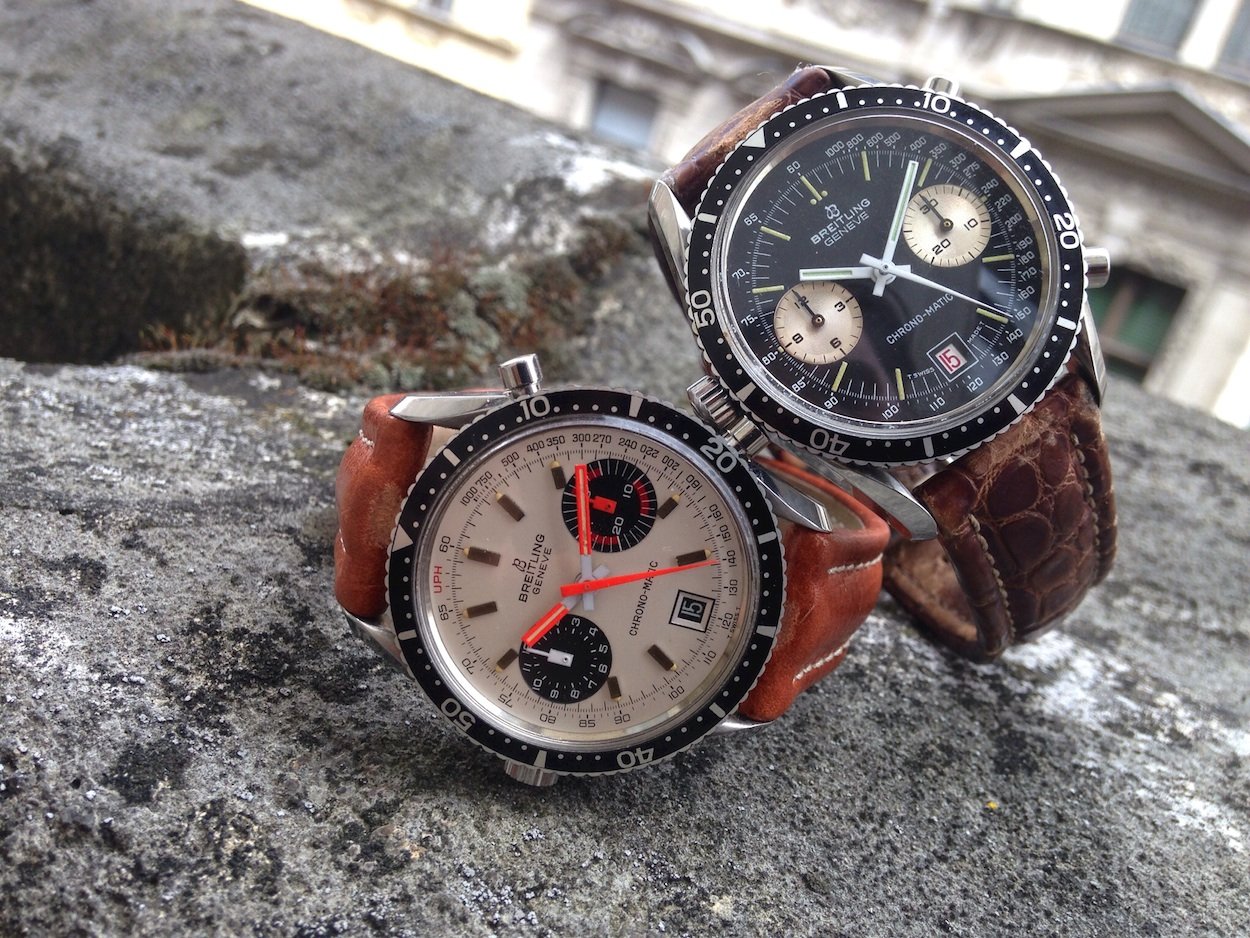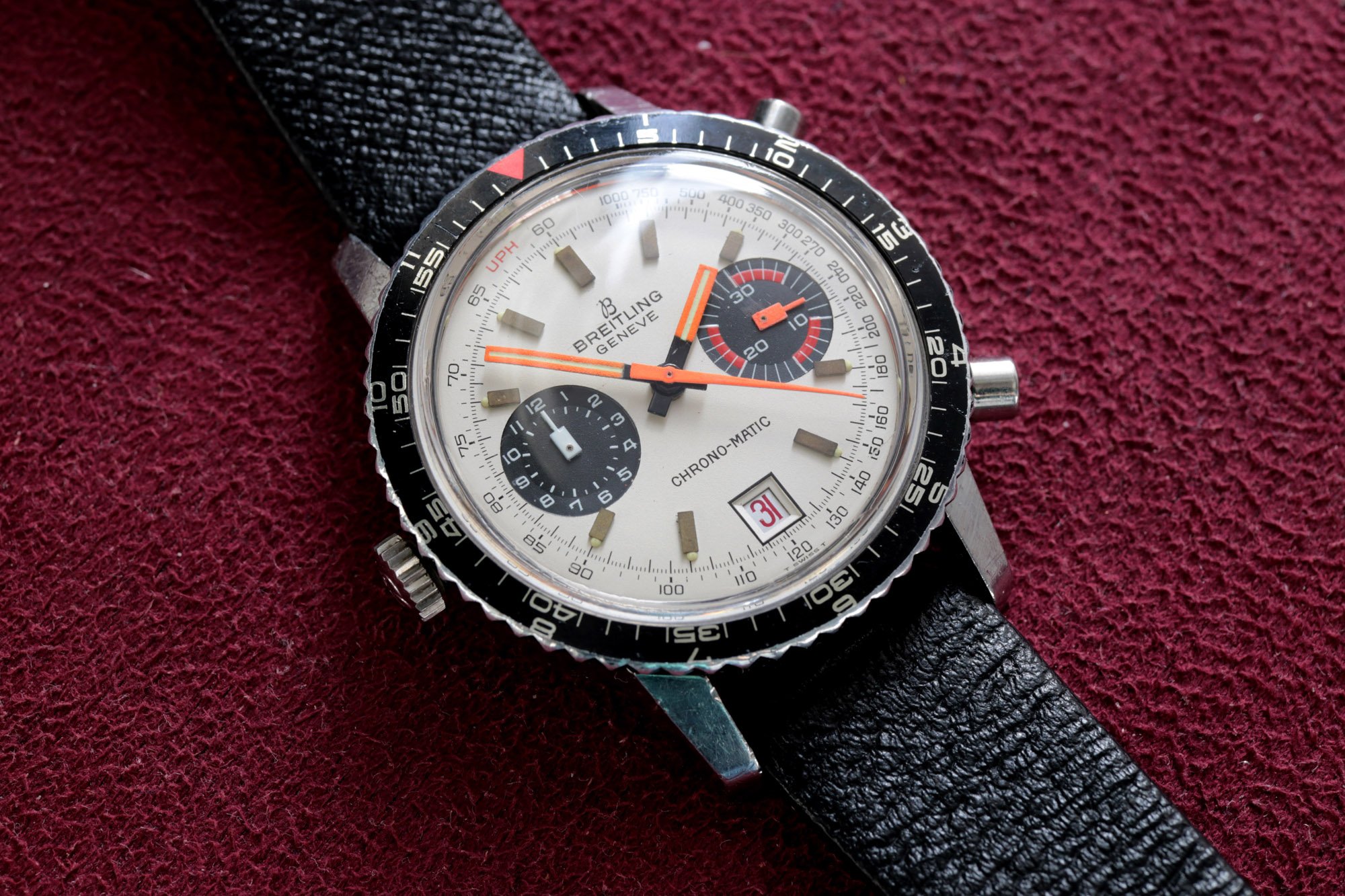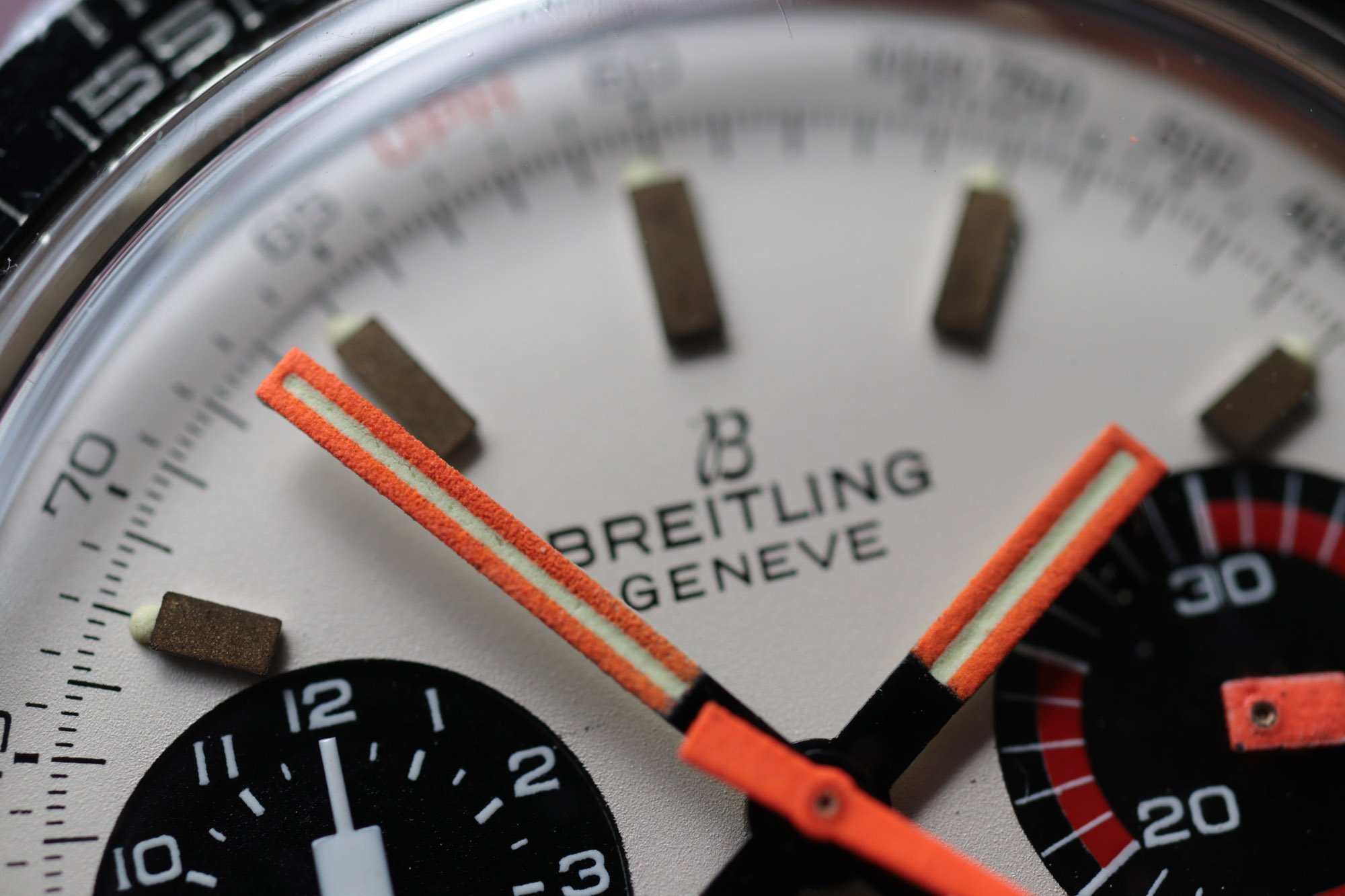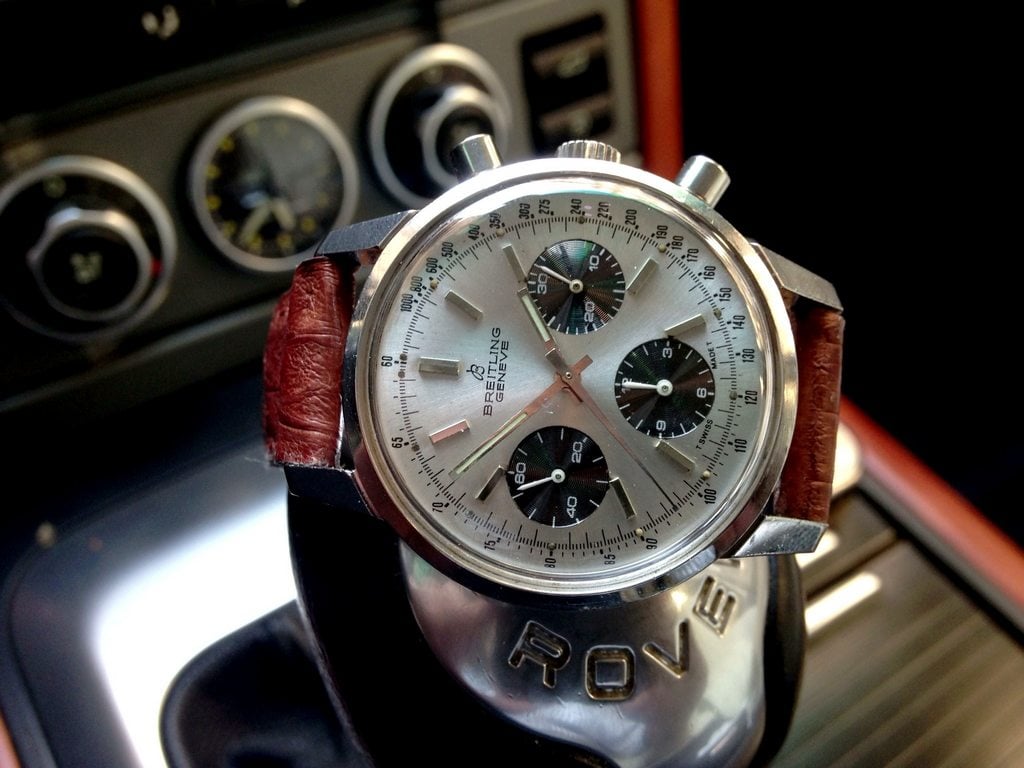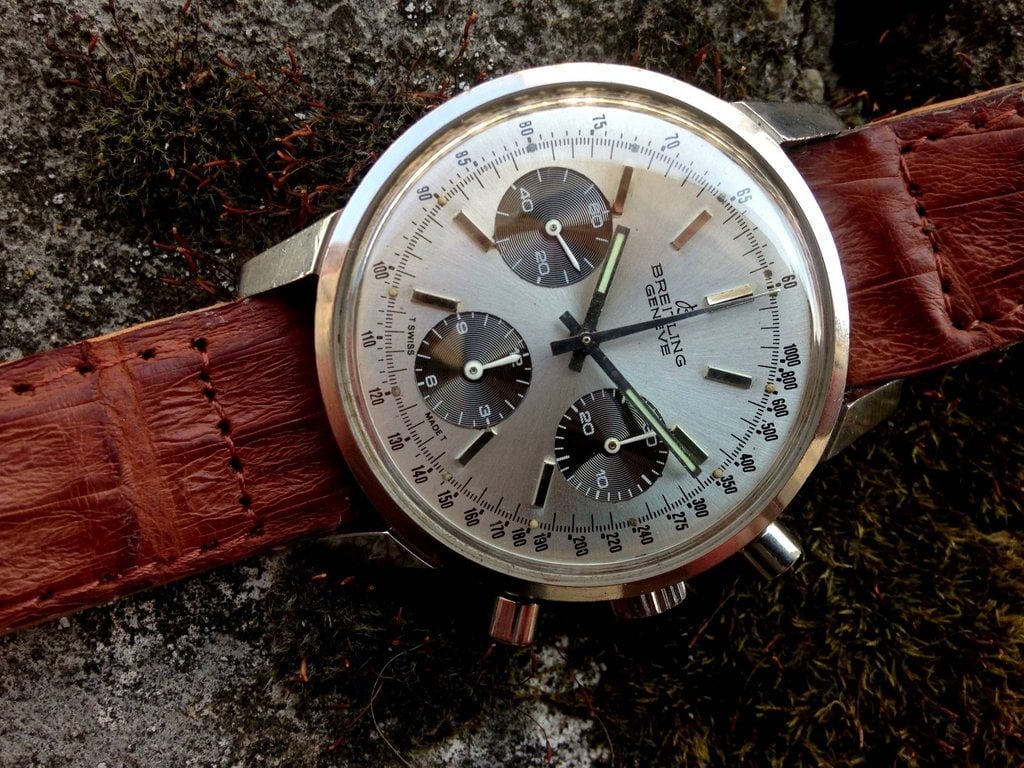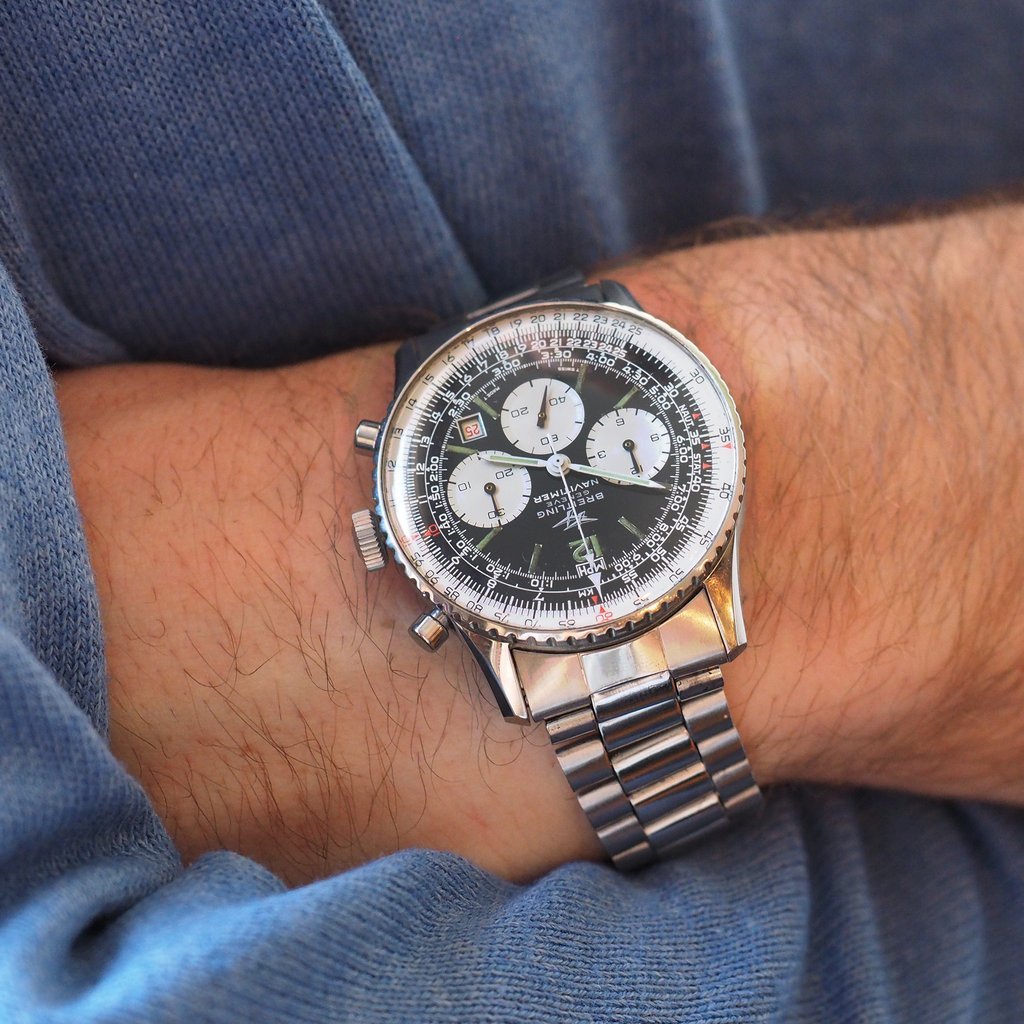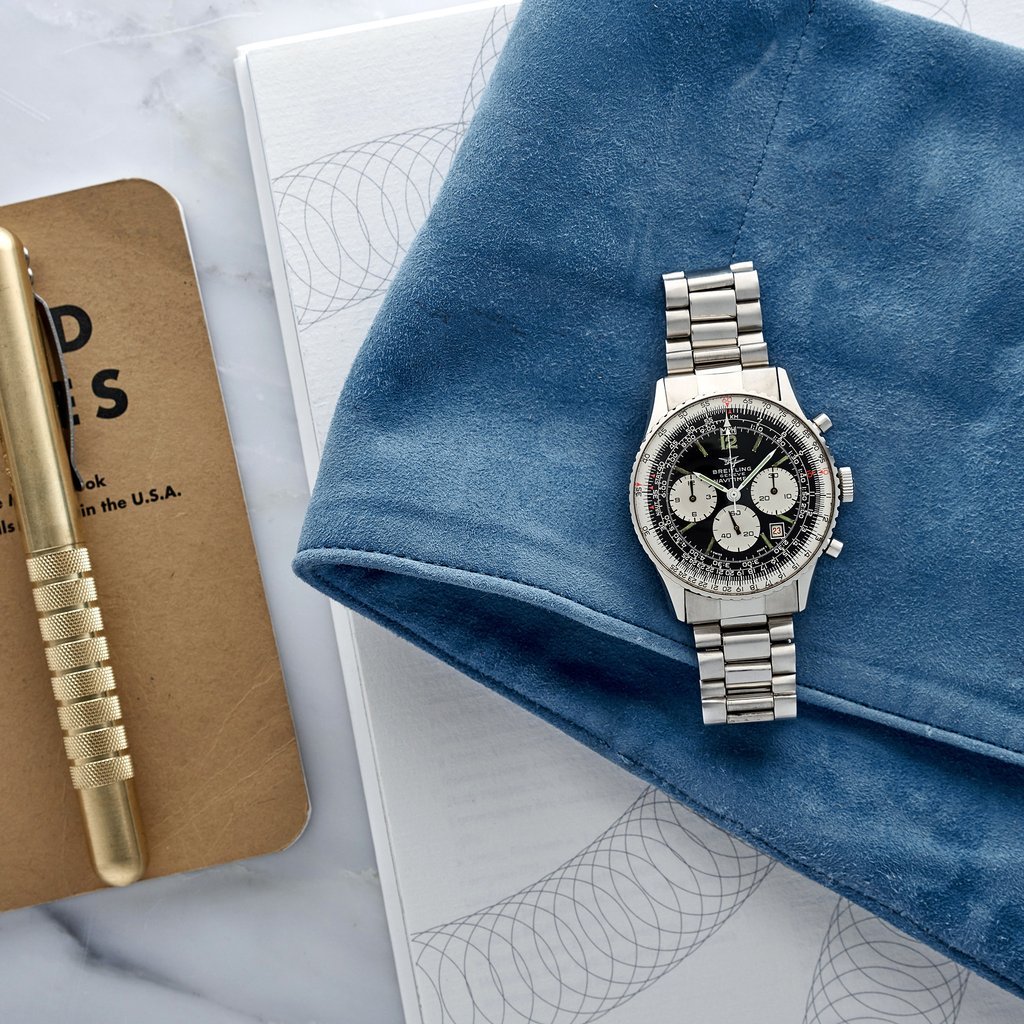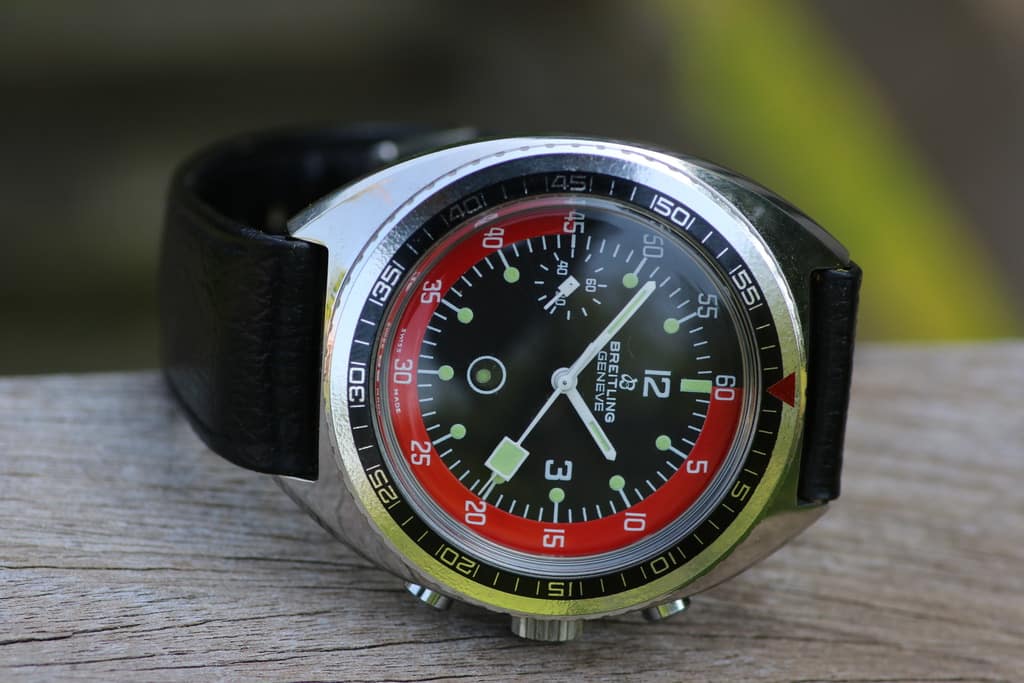Buying Guide: The Best Breitling Watches From The 1970s
We like to talk about vintage watches a lot within the Fratello team. While the daily routine is largely focused on the most recent developments in the world of watches, the most fun for many of us lies in the world of vintage watches. It’s a world full of history, remarkable watches, incredible stories, and quirky details. It inspired us to come up with a series of articles focusing on the best watches per decade from a select group of brands. Some of them priceless, some of them still affordable. In this installment, we will take a look at the best Breitling watches from the 1970s.
In the 1960s, we witnessed developments that challenged the status quo of watch design forever. The sheer amount of watches that pushed the visual boundaries of what was known and accepted was enormous. On top of that, we also saw great technical developments with the race to produce the first automatic chronograph as the most significant of the decade. The 1970s took it to a whole new level. When it comes to watch design, the seventies can only be described one way: no holds barred! The number of extravagant watches is countless. The quest for new shapes, the introduction of explosive colors, and the introduction of the automatic chronograph movement marked a wild time in the watch industry. It was a time that gave us some of the best collectible vintages watches ever.
Breitling in the 1970s
The 1970s mark a weird decade for Breitling. In the late 1960s, Breitling was part of that race to develop the first automatic chronograph movement. The brand teamed up in 1965 with Büren, Dubois-Depraz, and Heuer to form The Chronomatic/Project 99 Consortium that released its Calibre 11 to the world in 1969. I picked the Navitimer Chrono-Matic ref. 1806 as one of the first models powered by the new movement in the best Breitling watches from the 1960s article. As a result of the introduction in the late 1960s, we saw a string of great releases with the newly developed Chrono-matic movements in the 1970s. Next to that, the brand continued releasing some of the brand’s classics that made them such a big name in the industry.
But the quartz crisis also hit Breitling hard in the 1970s. After a steep decline in sales in 1979, the brand went out of business. It was the end of an era. As Mike explained in his article about vintage Breitling, “Willy Breitling, who was in charge of the company since 1933, sold off machinery, parts stock and completed watches, paid off all his creditors, and only then closed the company he had so impressively led.” Ernst Schneider bought the company from the founding Breitling family in 1979 after Willy Breitling passed away. He revived the brand in 1982 and continued the legacy of the brand. But let’s take a look at some of the great watches Breitling produced in the final days of Willy Breitling’s reign.
The entry-point — Breitling “Long Playing” Chronograph ref. 7104
The first watch I picked is the Breitling Long Playing Chronograph ref. 7104. The ref. 7104 was part of the Breitling collection in the early 1970s and was one of the more affordable lines in the collection. It’s a watch that is definitely defined by its 1970s presence, but it has a surprisingly contemporary feel. The attraction of the watch for me is a combination of the case shape, the dial design that features these oval, almost rectangular registers, the oversized numerals on the bezel, and the bright orange hands. It’s an overall very balanced design.
I have to say that the more I look at the case shape, the more I like the simplicity of it. But it’s not just a case that looks nice. Along with the Breitling ref. 2034 & ref. 34-31 the ref. 7104 has a 40mm modular case that lets you take the inner case out of the outer case and use them as a handheld stopwatch. It’s a nice feature that probably not too many people actually used. In all honesty, I wouldn’t either, but the case design that Breitling came up with makes the watch attractive for me.
Two different color options
Inside the case, you will find the manual winding Valjoux 7740 movement. This movement was produced from 1974 until 1978 and was based on the legendary Caliber 12 movement. For the Caliber 12, Buren supplied the base movements to Breitling and Valjoux supplied the components for the chronograph module that Dubois-Depraz designed. From there on, Breitling assembled the chronograph modules and combined them with the base movement to come up with the Caliber 12 movement. Valjoux essentially started manufacturing the base movement themselves and combined it with their chronograph module to develop the Valjoux 7740. The movement operates at 28,800vph and has a 45-hour power reserve, and features a date between 4 and 5 o’clock. It is why the watch got its “Long Playing” name, as the power reserve was more than most movements at the time.
Breitling produced two different versions of the ref. 7104 that both have a lot of charm. The first comes with a black dial, black bezel, and orange hands. The second is a panda version with a silver dial with black sub-dials, a black bezel, and orange hands. While the latter is definitely more defined by the 1970s, it’s also the stand-out of the two I would prefer. Finding a Breitling ref. 7104 is not that difficult. On top of that, you will be surprised that some of them are in excellent condition. Prices for one range from roughly 3K – 5K depending on its condition. You will buy something special that looks great for that money and could easily be a great vintage daily wearer.
My choice —Breitling Chrono-matic ref. 2130
My choice for this list is a rare watch. the Breitling Chrono-matic ref. 2130 is not a watch that you will see a lot. However, I think that it’s one of Breitling’s best. Not just when it comes to the watches introduced in the 1970s but of all times. The Chrono-matic ref. 2130 was introduced in 1977 and produced for only one year. It was actually the last reference Breitling introduced before going out of business in 1979, explaining why it’s hard to find. As this is the last reference that Breitling produced under the reins of Willy Breitling, it is quite legendary amongst Breitling collectors.
The ref. 2130 is a classic chronograph design with a very nice 39mm case with “lyre-shaped” lugs. It’s a perfect size even today to function as a daily wearer. As with the previous ref. 7104 this ref. 2130 also came with a panda and reversed panda dial. And like with the previous model, there is a difference in presence. But it’s even bigger than on the previous entry. The version with the panda dial came with orange hands and accents. The version with the reversed panda dial is completely black and white, making it more classical in its presence.
Nearly impossible to find
Inside the stainless steel case, you will find the legendary automatic Caliber 12. This legendary movement is the updated version of the legendary Caliber 11 that saw the operation frequency increased from 19,800vph to 21,600vph. One of the key features of the movement is that the crown is placed on the left side of the case and the chronograph pushers on the right side. This unusual arrangement is typical of a Chrono-matic movement from the late ’60 and early ’70s. This practical solution actually looks quite nice as well. I actually like it visually as well. The date aperture is placed at 6 o’clock, as you can see.
As said, finding a Breitling Chrono-matic ref. 2130 is incredibly tough. They show up for sale very rarely, and plenty of collectors would like to add one to their collection. If one shows up, what you will see regularly is that the white sub-dials of the black dial version often feature heavy patina. Not all of them, therefore, look so nice as the one pictured. But if one of these beauties does show up, expect to pay anywhere up from 4K at least. That’s a rough estimate, though, as not that many have been sold recently. And prices will probably go up quickly for one in great condition as there aren’t many around. What you will get in return is not only very rare, but it’s also one of the coolest Breitling watches ever produced.
Money is no object #1 — Breitling Chrono-matic ref. 2110
Another legendary 1970s watch is the Breitling Chrono-matic ref. 2110. It’s actually really close to the ref. 2130 I just discussed. So why pick two watches that are so close together? It’s a practical reason, as you can actually find the ref. 2110 if you would like to add one to your collection. And it’s a very relevant collector’s piece. Our Fratello editor Tomas actually wrote a great in-depth story about his ref. 2110 and how it got him enthusiastic about collecting vintage Breitling watches. I suggest you read his story to explain what makes this such a great timepiece more in detail.
As you can see, visually, the ref. 2110 has quite a bit in common with the ref. 2130. But there are also some key differences in the design. It’s actually several details that bring a lot of charm to this piece. The first that stood out for me is actually a personal quirk, and it’s the font type used for the numerals on the bezel. I love the modern style that Breitling used for the scales. Yes, there are two scales on the bezel. The first is the 60-minute scale, and the second a 12-hour scale. It’s another one of those quirky but nice details that make this a stand-out piece. On top of that, there are the red details that make the watch even more colorful. It adds even more ’70s style to the watch that makes it look great.
Two bezel versions
As you would have guessed, like quite a few Breitling models at the time, the ref. 2110 also came in a panda and reverse panda configuration. The reverse panda version is actually a bit more colorful than the ref. 2130 as it has an orange chronograph hand and orange closed tip hands. But the panda dial version actually came in two different versions. The difference is the bezel design. The first has a fully black bezel, as you see it in the pictures. But Breitling also produced a version with a black bezel with an inner silver ring. It does pull apart the two scales on the bezel visually, but as Tomas explained, the extra visual trigger could also clutter your view of the bezel. I personally like it from a distance, but practically it adds a challenge in terms of readability.
Inside the 39mm stainless steel case, you will find the Breitling Caliber 11. As Tomas explained in his article, Breitling produced several versions of the legendary Caliber 11 with later iterations (ref. 112) operating at a higher frequency and featuring several technical improvements. I would take up the visual challenge and go for the version with the bezel with the silver inner ring when it comes to my preference. I like the look of that bezel quite a lot. Whatever your preferred version is, all three show up regularly on the different platforms. Expect to pay between roughly 3K–4.5K for one depending on the condition. Overall the Breitling ref. 2110 is a great option for a vintage Breitling that combines that typical ’70s style with a legendary movement.
Money is no object #2 — Breitling Top Time “Long Playing” Chronograph ref. 815
My pick for the best Breitling watches of the 1960s was the Top Time ref. 810. It is one of my favorite Breitling watches ever produced. Its successor is the ref. 815 that first popped up in a Breitling catalog in 1970. It essentially takes the same overall aesthetic but has an updated case design. On top of that, many of the ref. 815 models, you will find nowadays have a gold-plated case. The “regular” stainless steel version is a lot rarer, although not impossible to find. The watch features a panda configuration with a silver dial with black sub-dials. I actually prefer the ref. 810s reverse panda configuration but
The watch also saw an updated movement. The ref. 810 was equipped with the hand-wound Venus 178 column-wheel chronograph movement. For the ref. 815 Breitling used the manual winding Valjoux 7736 movement inside the 39mm case. The movement operates at 18,000vph, and thanks to its longer mainspring, Breitling was able to up the power reserve to 52 hours. Once again, it explains the “Long Playing” name. The Valjoux 7736 is a simple movement but is very reliable and, to this day, easy to service.
Top Time Ref. 810 or ref. 815?
This Top Time ref. 815 was produced for several years until it was discontinued around 74-75. What I love about it is the immaculate dial design that leaves plenty of room to breathe, even with the three sub-dials. While I prefer the ref. 810 with the reverse panda layout, this ref, 815 in stainless steel, definitely has plenty of charm. When searching for a Top Time ref. 815, you will, however, quickly find out that the majority of ref. 815’s on offer are the gold-plated ones. And those have a different aesthetic and a different feel.
While the gold-plated models definitely have their charm, they also look a bit more classic in their appearance. That’s why I would go for the stainless steel version, as would many collectors. That’s why it is no surprise that the gold-plated models are also more affordable than the stainless steel versions. You will be able to find a gold-plated model for roughly 2K to 3K. A stainless steel version will cost you around 5K to 6K, depending on its condition. Knowing that, you could also opt for the legendary Top Time ref. 810, it could be a tough choice. Having said that, both show perfectly why the Top Time chronographs were almost perfect blueprints for the modern-day chronographs. And they are still better than most.
Money is no object #3 — Breitling Navitimer ref. 7806
The last watch on this list had to be the Navitimer. As the Willy Breitling era came to an end, it only makes sense to honor the man who made Breitling such an important brand with its biggest icon. The Breitling Navitimer ref. 7806 was introduced in 1972, and it is a much talked about Navitimer. The Navitimer ref. 7806 was actually the first Navitimer that featured a date function. As you can see, the date aperture is tucked away between the 4 and 5 o’clock markers. The big question is whether the Navitimer needs a date function or not? While it’s certainly not my preference, I’m curious to find out what you think.
For the Navitimer Date, Breitling used the same manual-winding Valjoux 7740 movement that powered the first pick on this list. But it was not the only change as the hour counter at six o’clock was replaced by a sweep seconds counter. On top of that, Breitling also changed the dial design, moving the Navitimer wording up and placing it under the “Breitling Geneve” wording. Additionally, the brand added little hints of color to the dial. The date numerals are red on a white date disc, creating quite a bit of contrast with the black dial. Next to that, Breitling also added little hinds of red to the slide rule for some extra color.
Works perfectly on steel
While I am all about the monochromatic looks of the previous generations of the Navitimer, this ref. 7806 definitely is a clear statement of the time it was released in. It is what gives this Navitimer its charm. And it’s not a charm is necessarily dislike. It’s all a matter of putting this Navitimer in the context of its time. And what is specifically like about the model in the picture is that the 41mm case works really well with the stainless steel bracelet with its 22mm wide lugs. The folded Breitling Jubilee bracelet features the same twin-jet logo on the clasp as is used on the dial. It’s a nice detail of a bracelet that adds a lot of character to this specific piece.
Finding a ’70s Navitimer ref. 7806 is definitely possible. The condition is always key, and it definitely plays a big part in the price for one of the vintage pieces on offer. If you would like to add a ref. 7806 to your collection, expect to pay roughly between 4K and 8K. On top of that, the special models issued to air forces of different countries also play a part in collectibility and the corresponding prices. While the Navitimer ref. 7806 might not be the most popular Navitimer; it certainly has its place in Breitling history. As such, it is a great piece to close out this list of the five most remarkable Breitling watches from the 1970s.
Final Thoughts
As always, there could have been plenty more watches on this list. Breitling produced many incredible watches during the seventies, including the Referee ref.34-31 (pictured), the Pult/Pupitre ref.2117 & 7101, the Cosmonaut ref. 1809 and the Chronomat ref. 7808. And those are just a few.
When it comes to Breitling, you must get familiar with the history of the different models. You will find a lot of different executions of the same watch. The most common differences are dial executions and different logos that are used. Next to that, you have to keep in mind that many vintage pieces were serviced over the decades, and parts have been replaced. And lastly, you have to be aware of many fake and Franken pieces out there.
A lot of this crucial historical info has been well documented by collectors and available to read. Breitling The Book by Hervé Genoud is a great source of information, as is Benno Richter’s Breitling The History of a Great Brand of Watches 1884 to the Present. On top of that, contacting vintage experts will help out greatly. It’s a great way to learn more about a watch and get to know some amazing people along the way. You will find a lot of info on breitlingsource.com, and you can visit the Timezone forum for Breitling here. On both, you will find a great number of Breitling collectors that can help you out. Another great resource on the history of the Navitimer is a Watchuseek forum thread that can be found here.
Next week, we will look at some of the best watches from King Seiko and Grand Seiko from the 1970s. In the meantime, let us know in the comment section what your favorite Breitling from the 1970s is.

